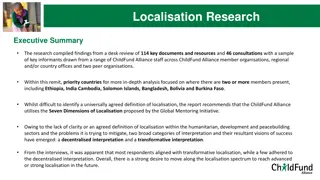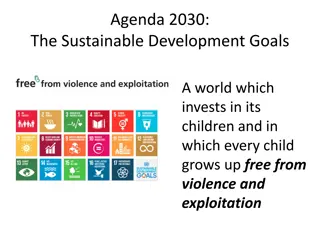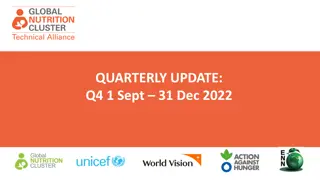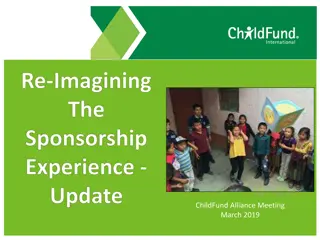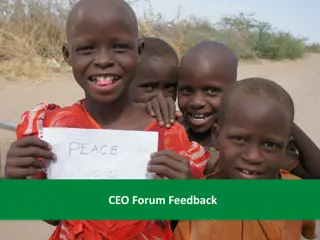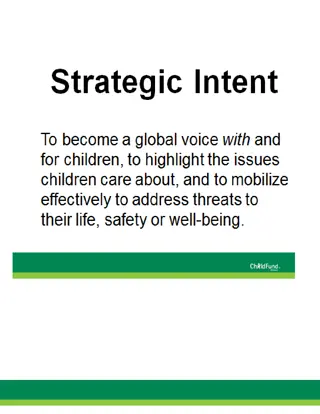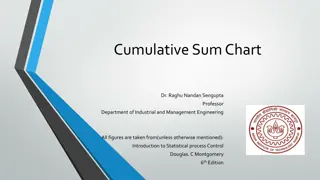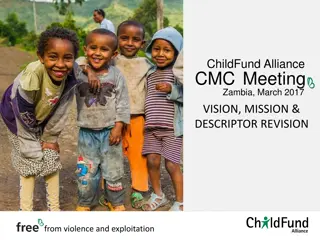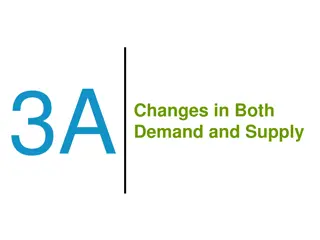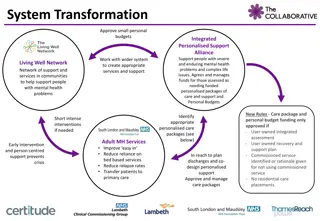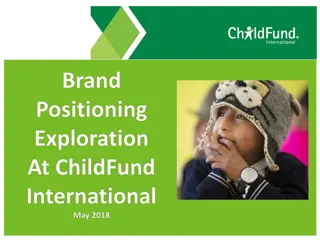Strategic Shifts in ChildFund Alliance Members' Response
ChildFund Alliance members are making strategic shifts in response to changing contexts. They are refocusing programs on child protection, advocacy, and measuring outcomes. Geographic focus includes middle-income countries and unexpected locations. Funding strategies are diversifying, and partnerships are evolving towards new modalities. Organizational partnerships are expanding outside the Alliance to achieve strategic goals.
Download Presentation

Please find below an Image/Link to download the presentation.
The content on the website is provided AS IS for your information and personal use only. It may not be sold, licensed, or shared on other websites without obtaining consent from the author. Download presentation by click this link. If you encounter any issues during the download, it is possible that the publisher has removed the file from their server.
E N D
Presentation Transcript
STRATEGIC SHIFTS BEING MADE BY CHILDFUND ALLIANCE MEMBERS in response to the changing context SUMMARY Programs and advocacy Geographic focus Funding / resource mobilisation Partnerships Systems, technology and culture.
Strategic changes being made by ChildFund Alliance members PROGRAM REFOCUSING Alliance members are thinking about the changing nature of child poverty and how to respond (inequality, displacement, migration, violence, climate change.) New areas of program work have emerged notably child protection (EVAC). Education and early childhood remain strong focuses. Health, watsan, livelihoods, HIV/AIDS, not so much. Alliance members have begun to undertake advocacy and policy influence. This is new for many members. Child participation continues to be highly valued. Some innovative programs, eg, sport for development, safe migration programs. Stronger focus on measuring program results, outcomes and impact. Disaster risk reduction & emergency response are seen as strategically important, but capacity has not grown.
Strategic changes being made by Alliance members GEOGRAPHIC FOCUS Alliance members are considering how to remain relevant in middle income countries Some Alliance members are narrowing program support to a specific region or specified group of countries (eg, Australia, New Zealand) Some members place a high strategic importance on having a domestic program (eg, Korea, ChildFund International) Opportunities and need have led Alliance members to unexpected locations (eg, Ukraine) Total revenue is not increasing, but the number of program countries is expanding; now more than 60. But not in many of the poorest countries.
Strategic changes being made by Alliance members FUNDING/ RESOURCE MOBILISATION Some members are actively moving away from a reliance on child sponsorship while others are investing even more strongly in it. New regular-giving products are being introduced. Most members are diversifying products and marketing channels. Grant-seeking has become more important. The EULO has been established. New modalities for engaging donors are in development. New financing mechanisms such as impact investing are being investigated. Members are examining how an issues/cause-based approach can provide new opportunities for funding.
Strategic changes being made by Alliance members ORGANISATIONAL PARTNERS Members are exploring new partnerships outside the Alliance that contribute to their strategic goals. Consortia approaches have become common. Direct relationships with local civil society partners have become more important. Takeovers of smaller NGOs have already taken place, more mergers and acquisitions are being explored. The Alliance is actively considering new members. Members are strengthening their engagement with ChildFund Alliance and bilaterally on specific programs.
Strategic changes being made by ChildFund Alliance members SYSTEMS and TECHNOLOGY Members are finding it challenging to modernise their technology and take advantage of new IT Most Alliance members have made difficult and expensive investments in new database /CRM systems Greater efficiency is being pursued: more efficient cost-sharing by national offices (Alternative Presence); shared services are being trialled by some members. Innovation has been given a higher priority. Some members have introduced processes and mechanisms to actively encourage a culture of innovation.





